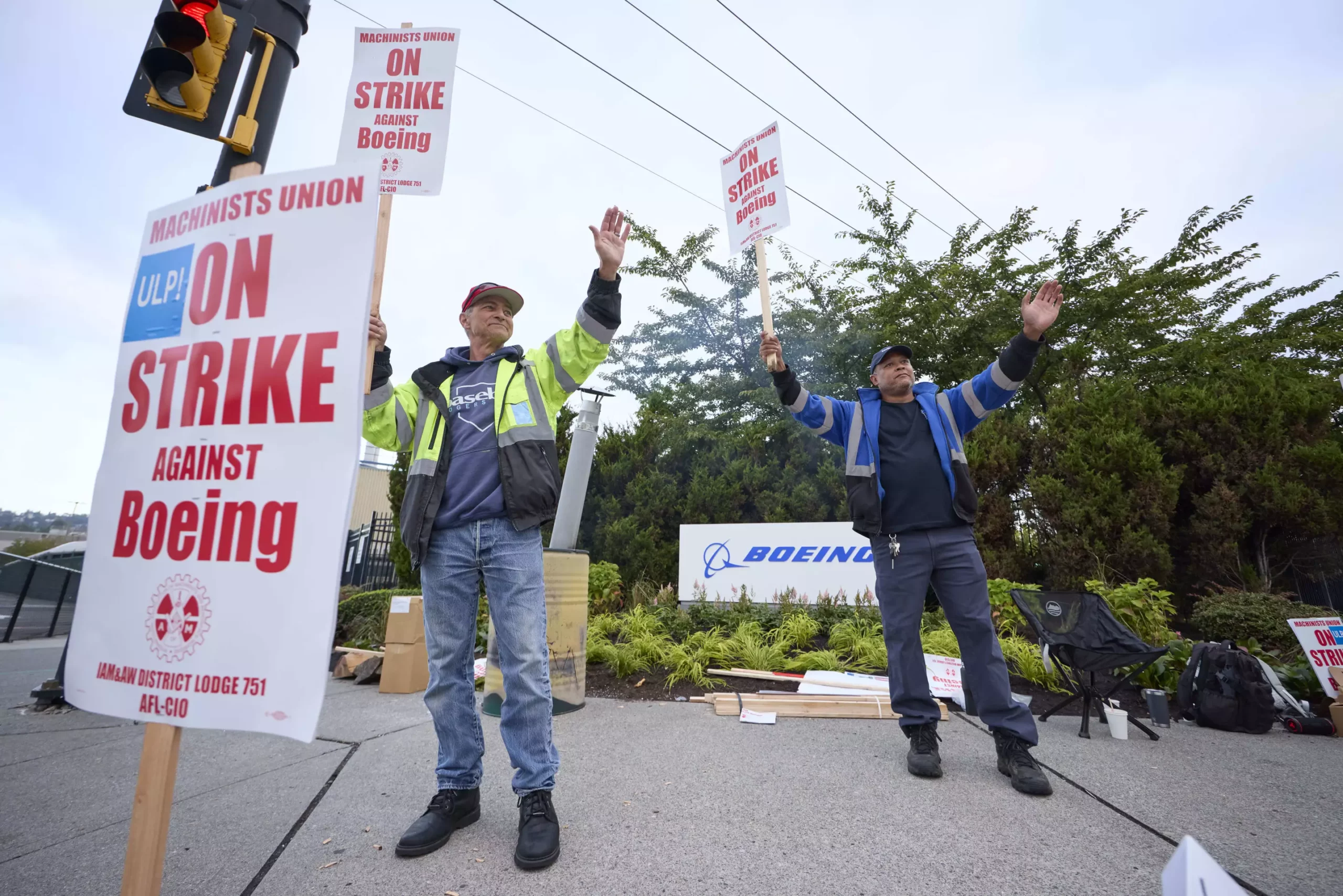In a significant turn of events, thousands of blue-collar workers at Boeing have initiated a strike after overwhelmingly rejecting a proposed contract that promised a 25% wage increase over four years. This action, involving 33,000 machinists mainly in the Pacific Northwest, symbolizes a growing frustration among workers facing a stark rise in living costs. As these employees walked the picket lines rather than assembling Boeing’s iconic aircraft, they expressed their discontent not only with wages but also with the broader corporate practices that they believe undervalue their contributions.
While this labor dispute may not immediately affect airline operations, its implications for Boeing’s production capabilities are considerable. The company is grappling with a multitude of challenges, including substantial financial losses and a tarnished reputation. The striking workers, by halting production of best-selling jetliners like the 737 Max, pose a significant challenge to a company already in dire straits. Boeing’s response to the strike has demonstrated its recognition of the financial pressures it faces; a plummeting stock price reflects investor concerns rooted in prolonged operational difficulties.
At the heart of the strike lies a deeper dissatisfaction among workers. Statements from those involved reveal a common sentiment: the proposed wage increases do not match the escalating cost of living in their region. To illustrate, John Olson, a toolmaker at Boeing, highlighted that his salary has only increased marginally over his six years with the company, failing to keep pace with inflation. As he articulated, the wage increases have been formulated based on outdated standards from over a decade ago, resulting in a sense of neglect among the machinists.
The union’s overarching demands also included reinstating traditional pensions that were eliminated a decade ago; however, they ultimately accepted a modest increase in employer contributions to 401(k) plans. This shift reflects a broader trend in the workforce, where employees feel the effects of shifting retirement structures on their long-term financial stability.
Adding to the dissatisfaction was the modification of the criteria used to determine annual bonuses, which further fueled negative sentiments among workers. Despite the potential for increased earnings under the revised contract, many felt that the approach was insufficient compared to their sacrifices, especially in light of the significant corporate profits experienced in recent years.
The current strike presents a complex situation for Boeing’s leadership. Following the resounding rejection of the contract, the hammering sense of urgency has led CEO Kelly Ortberg to actively seek better terms reflective of the workers’ needs. Although he previously communicated the challenges of a strike to the machinists, the reality now is that negotiations will require a recalibration of expectations from both sides to restore harmony and productivity.
The company’s willingness to uphold its commitments—such as the promise to build future aircraft in Washington state—highlights an effort to address union concerns. However, the company’s leadership must recognize that trust has eroded, and its efforts must transcend platitudes to establish genuine partnerships with the workforce.
As negotiations stall and the strike continues, Boeing must contend with the impact of worker discontent on its operations. Past strikes, notably in 2008 and 1995, have proved costly—potentially amounting to billions in deferred revenue based on past durations and production losses. The ongoing strike can similarly threaten both immediate financial health and long-term brand integrity, further complicating Boeing’s recovery in the competitive aerospace industry.
Boeing’s situation reflects broader labor dynamics within the U.S. manufacturing sector. As blue-collar wages in many industries struggle to keep pace with inflation and living costs, the Boeing strike serves as a crucial bellwether for future labor disputes across similar sectors. It epitomizes a struggle against stagnant wages and calls for respect and acknowledgment of workers’ contributions, a battle resonating with many labor forces nationwide.
Both sides must move towards a resolution, understanding that a prolonged strike can yield significant repercussions not just for their immediate operations but also for their overall reputations in the marketplace. As workers exhibit a growing unwillingness to accept compromises that do not reflect their realities, businesses like Boeing must confront changing expectations concerning equitable labor practices—a challenge that may redefine the contours of labor relations going forward.
The Boeing strike has far-reaching implications not only for the company and its workers but also for the industry as a whole. As workers fight for their rights and fair compensation, corporations are challenged to navigate the delicate balance between profitability and employee satisfaction, paving the way for future negotiations and industry norms.

